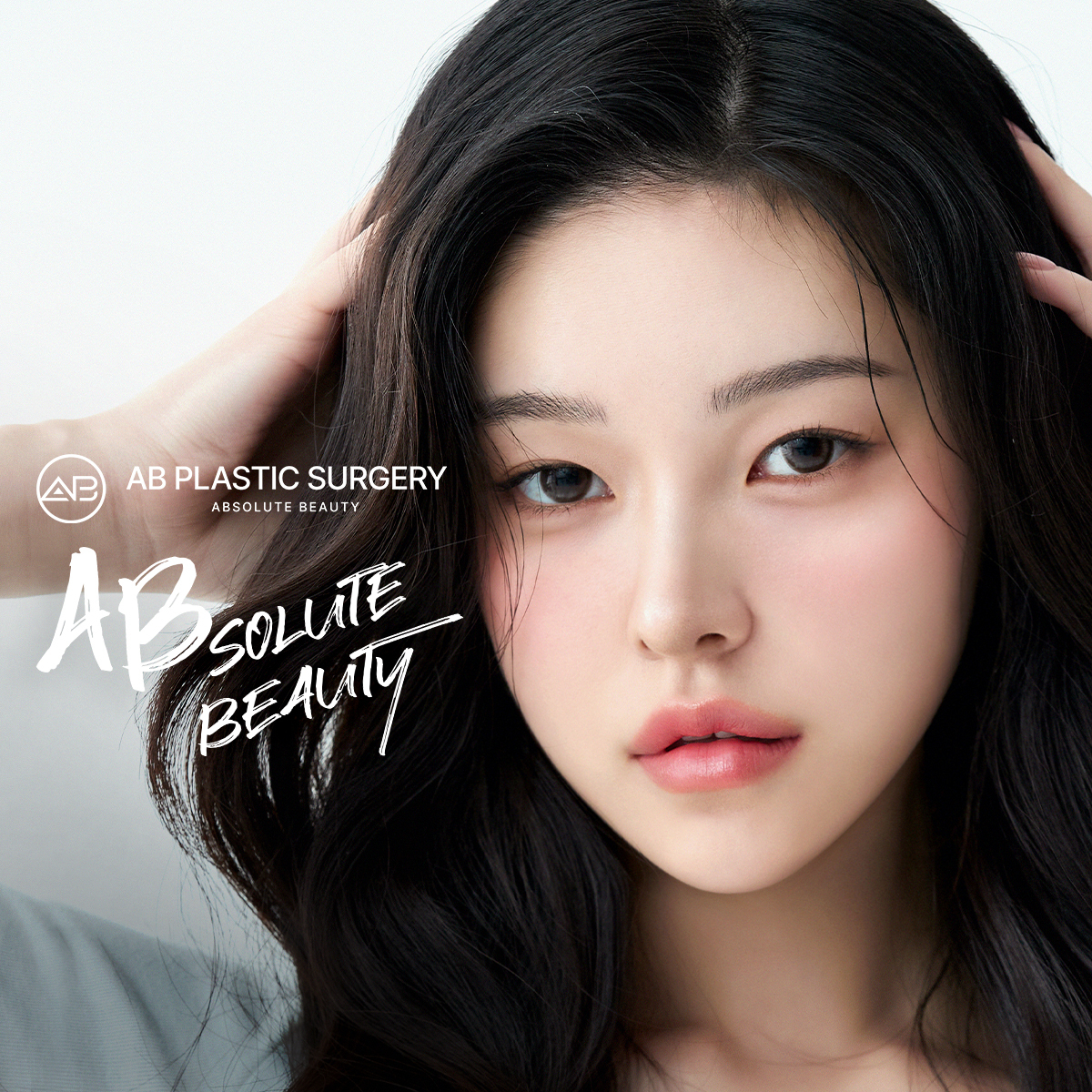How to Correct Uneven Eyes: Medical Solutions That Actually Work
Table of Contents
1. What Are Uneven Eyes?
2. 5 Common Causes of Uneven Eyes
3. Most Effective Correction Methods at AB Plastic Surgery Korea
4. Why Choose AB Plastic Surgery Korea for Uneven Eyes?
5. When Should You Consider Treatment?
6. Taking the Next Step: Online Consultation
Have you ever noticed that one eye looks slightly different from the other when you look in the mirror? You're not alone. Uneven eyes, also known as asymmetrical eyes, affect the vast majority of people to some degree. In fact, perfect facial symmetry is incredibly rare in nature, and studies suggest that more than 90% of people have some level of facial asymmetry.
While mild eye asymmetry is completely normal and often adds character to your face, significant unevenness can affect your confidence and how you perceive yourself. The good news? Understanding what causes uneven eyes is the first step toward finding the right solution for you.
 What Are Uneven Eyes?
What Are Uneven Eyes?
Uneven eyes refer to any noticeable asymmetry between your two eyes. This can manifest in several ways:
-
One eyelid appearing higher or lower than the other
-
Different eye shapes or sizes
-
Uneven double eyelid creases (one eye with a visible crease, the other without)
-
Asymmetrical eye openings
-
Different positions of the eyebrows affecting eye appearance
The asymmetry can be present from birth (congenital) or develop over time due to various factors including aging, lifestyle habits, or underlying medical conditions. Understanding uneven eyes and their causes is crucial for finding the right treatment solution.
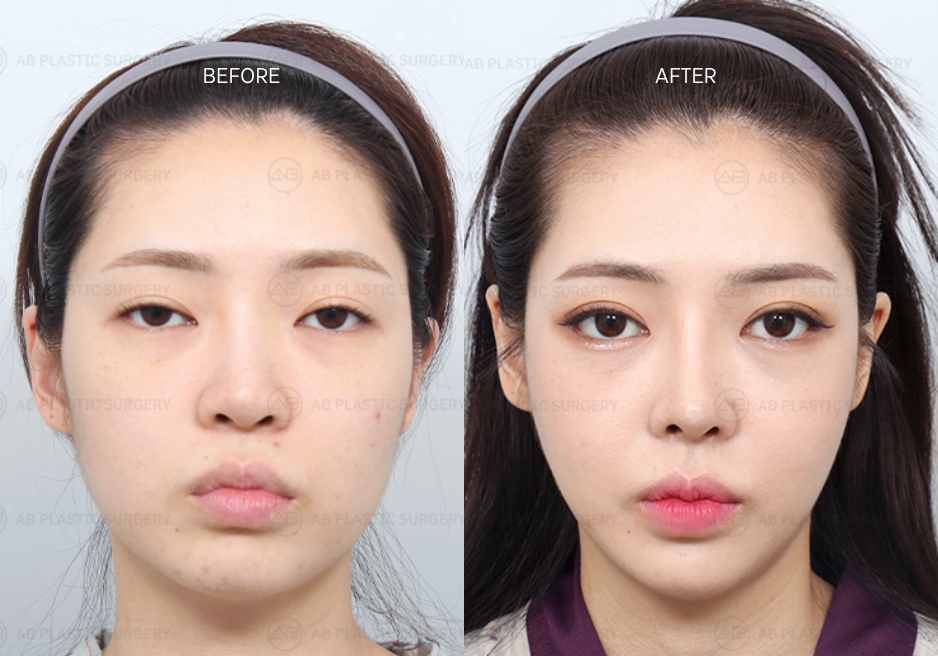
 5 Common Causes of Uneven Eyes
5 Common Causes of Uneven Eyes
1. Natural Facial Asymmetry
The most common cause: Genetic factors determine our facial structure, and nature rarely creates perfect mirror images. Your bone structure, muscle development, and soft tissue distribution naturally differ slightly between the left and right sides of your face.
Research published in facial plastic surgery journals indicates that the human face typically has a 2-3% difference in measurements between sides, which is considered normal and often goes unnoticed. However, when this asymmetry is more pronounced around the eyes, it becomes more visible due to the eyes' prominence in facial recognition. This natural variation is a leading cause of uneven eyes.
What you'll notice: One eye may appear slightly larger, the eyelid crease might sit at different heights, or one eye opening may be more oval while the other is rounder. These are typical signs of uneven eyes from natural asymmetry.
2. Ptosis (Drooping Eyelid)
Ptosis occurs when the muscle responsible for lifting your eyelid (the levator muscle) weakens or doesn't function properly. This can affect one or both eyes, but when it affects just one side, it creates noticeable asymmetry. Ptosis is a common medical condition that causes uneven eyes.
Types of ptosis
-
Congenital ptosis: Present from birth due to improper development of the levator muscle, often creating uneven eyes from childhood
-
Acquired ptosis: Develops with age as the muscle naturally weakens, or results from injury, eye surgery, or prolonged contact lens wear
Studies show that age-related ptosis affects approximately 10-20% of adults over 60, though it can occur earlier depending on individual factors. Ptosis is one of the primary medical causes of uneven eyes.
What you'll notice: One upper eyelid sits lower than the other, partially covering the eye and making it appear smaller. In severe cases, it can even obstruct vision. This drooping creates a noticeable appearance of uneven eyes.
3. Uneven Double Eyelid Creases
Many people, particularly those of East Asian descent, experience asymmetry in their double eyelid creases. You might have a well-defined crease on one eye (double eyelid) and little to no crease on the other (monolid), or simply have creases at different heights. This is one of the most common presentations of uneven eyes.
This asymmetry can be congenital or develop over time due to:
-
Natural aging and skin laxity
-
Repeated eye rubbing or makeup application habits
-
Sleeping positions that put pressure on one side
-
Fluid retention or inflammation
All of these factors can contribute to the development or worsening of uneven eyes over time.
What you notice: One eye appears to have more lid space visible above the lash line, or the creases fold at different heights when you open your eyes. This creates the classic appearance of uneven eyes from asymmetrical eyelid creases.
4. Orbital Fat Distribution and Volume Loss
The area around your eyes contains pockets of fat that provide support and volume. As we age, these fat pads can shift, diminish, or redistribute unevenly between the two sides of your face. This uneven fat distribution is another common cause of uneven eyes.
Contributing factors include:
-
Natural aging process (typically becoming noticeable in your 30s and 40s)
-
Genetics determining how and where fat is stored
-
Lifestyle factors like sun exposure, smoking, and sleep quality
-
Weight fluctuations
Each of these factors can contribute to the appearance of uneven eyes as we age.
What you'll notice: One eye may appear more sunken or hollow, or you might see more prominent under-eye bags on one side. The eyelid skin on one side may appear looser or more hooded. These signs indicate uneven eyes caused by fat distribution changes.
5. Lifestyle Habits and Repetitive Behaviors
Your daily habits can contribute to or exacerbate eye asymmetry over time:
-
Sleeping position: Consistently sleeping on one side can compress facial tissues unevenly, contributing to uneven eyes
-
Habitual expressions: Repeatedly raising one eyebrow or squinting one eye
-
Screen time posture: Tilting your head when looking at devices
-
Eye rubbing: Rubbing one eye more frequently can stretch the eyelid skin and worsen uneven eyes
-
Uneven sun exposure: If you frequently drive or sit near a window, one side may experience more photoaging
While these habits alone rarely cause severe asymmetry, they can compound existing differences over years or decades, making uneven eyes more pronounced.
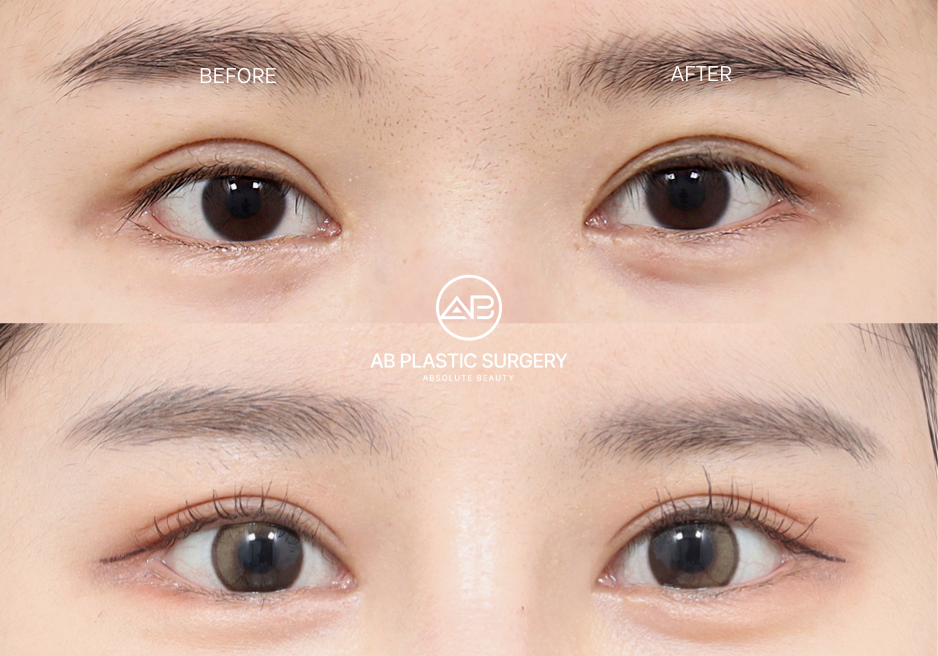
 Most Effective Correction Methods at AB Plastic Surgery Korea
Most Effective Correction Methods at AB Plastic Surgery Korea
The right treatment for uneven eyes depends entirely on the underlying cause and the degree of asymmetry. At AB Plastic Surgery Korea, we offer comprehensive solutions tailored to your specific needs. Our specialized procedures effectively correct uneven eyes and restore facial harmony.
AB's Semi-Fancy Natural Translucent Adhesion Double Eyelid Surgery
For uneven double eyelid creases, AB Plastic Surgery Korea has developed a specialized approach that creates symmetrical, natural-looking results with minimal scarring. This procedure is highly effective for correcting uneven eyes caused by eyelid crease asymmetry.
What makes AB's technique unique
-
Translucent adhesion method: Creates a semi-fancy crease line that remains inconspicuous even when eyes are closed, effectively correcting uneven eyes
-
Customized design: Tailored lines designed for each individual's unique eye shape and tissue condition to address uneven eyes
-
Multiple knot fixation: Double fixation technique prevents loosening and ensures long-lasting results for uneven eyes correction
-
Minimal swelling approach: Precise surgical planning and shorter procedure times minimize post-operative swelling and bruising
-
No visible scarring: Knots are created deep inside the skin, leaving no traces even with eyes closed
Best for: Creating symmetrical double eyelid creases, correcting uneven lid shapes, achieving natural-looking results with faster recovery. This is ideal for patients with uneven eyes from eyelid crease asymmetry.
Recovery: Most patients return to daily activities within 7-10 days, with final results visible after swelling completely subsides (3-6 months)
Ptosis Correction Surgery
When drooping eyelids cause asymmetry, AB's ptosis correction surgery strengthens the eye-opening muscles to create balanced, symmetrical eyes. This procedure effectively eliminates uneven eyes caused by ptosis.
AB's approach to ptosis correction
AB offers both incisional and non-incisional methods, depending on the severity of your condition:
Non-Incisional Ptosis Correction
-
Ideal for cases without severe ptosis or thick skin that cause mild uneven eyes
-
Surgery strengthens eye-opening muscles through small grooves without cutting the skin
-
Minimal scarring and faster recovery from uneven eyes correction
-
Can be combined with double eyelid surgery for comprehensive results
Incisional Ptosis Correction
-
Recommended for severe, congenital ptosis requiring firm correction of uneven eyes
-
Strengthens muscles by minimizing skin tissue incision and removing unnecessary fat
-
Precisely determines muscle and fat adjustment needed to correct uneven eyes
-
Creates natural eye appearance without overcorrection
What the surgery involves
-
Adjusting the tension of the levator muscle (eye-opening muscle) to eliminate uneven eyes
-
Careful correction intensity adjustment based on individual condition
-
Proper positioning to match both eyes symmetrically and correct uneven eyes
-
Combined with appropriate double eyelid line creation
Key considerations: AB's experienced surgeons carefully adjust correction intensity to avoid common complications like difficulty closing eyes, overly harsh appearance, or cramped-looking eyes.
Best for: Moderate to severe eyelid drooping affecting one or both eyes, creating dramatic yet natural eye contours. This effectively addresses uneven eyes from ptosis.
Recovery: Initial swelling subsides within 2 weeks, with optimal results visible after 2-3 months
Epicanthoplasty for Inner Corner Asymmetry
Epicanthoplasty addresses the Mongolian fold at the inner corners of the eyes, which can contribute to asymmetrical appearance when present unevenly. This procedure is effective for correcting uneven eyes caused by epicanthal fold asymmetry.
AB's Epicanthoplasty procedure
-
Technique: Relocates or removes the Mongolian fold at the front corners of the eyes to correct uneven eyes
-
Results: Opens up the front and upper sides of the eyes, creating larger, clearer eye appearance
-
Effect on asymmetry: Increases both horizontal and vertical eye dimensions symmetrically, eliminating uneven eyes
-
Scarring: Sutures performed from the inside to minimize visibility of incision lines
The procedure:
-
Design phase: Thorough examination of eye structure and muscles to plan incision for uneven eyes correction
-
Incision: Mongolian fold is adjusted based on the angle and characteristics of the epicanthal fold
-
Suture: Internal suturing technique creates fresher, more refined-looking eyes with minimal scarring
Best for: Eyes that appear stuffy or heavy despite having double eyelids, asymmetry caused by uneven epicanthal folds, creating wider and more prominent eye shape. Ideal for correcting uneven eyes from inner corner asymmetry.
Often combined with: Double eyelid surgery for comprehensive correction and optimal results
Lateral Canthoplasty for Outer Corner Correction
When the outer corners of your eyes contribute to asymmetry, lateral canthoplasty can create balance by adjusting the eye's width and angle. This procedure effectively addresses uneven eyes caused by outer corner asymmetry.
AB's Lateral Canthoplasty approach
-
Firm periosteum anchoring: The desquamated orbicularis oculi muscles are securely fastened to the periosteum to prevent recurrence
-
Optimal angle creation: Achieves eye angle typically between 5-10 degrees for natural appearance and correction of uneven eyes
-
No surface scarring: Incision made on inner conjunctiva means no visible external scars
-
Long-lasting results: Strong fixation ensures eyes remain in corrected position, preventing return of uneven eyes
The procedure:
-
Incision of skin and inner conjunctiva
-
Desquamation of orbicularis oculi muscles to prevent recurrence
-
Secure attachment to periosteum for durability
-
Meticulous suturing for optimal results
Best for: Improving eye size and shape, correcting drooping outer corners, creating more striking eye appearance. Highly effective for treating uneven eyes from outer corner issues.
Lower Lateral Canthoplasty (Lower Canthoplasty)
This procedure addresses the lower line of the eyes through conjunctival incision, creating a softer, more refreshed appearance. It can help correct uneven eyes affecting the lower eye area.
AB's technique:
-
Conjunctival approach: Incision occurs inside the lower eyelid, leaving no external scarring
-
45-degree extension: Inner conjunctiva extended and firmly secured for natural results
-
Optimal angle: Tail of eyes secured to inner periosteum at 5-10 degrees for softer appearance
-
No stitch removal needed: Since stitches are internal, no removal appointment necessary
Best for: Creating longer eye appearance, achieving softer facial impression, correcting asymmetry in lower eye area. Excellent for uneven eyes presenting in the lower eyelid region.
Revision Surgery for Previous Procedures
If you've had previous eye surgery that resulted in asymmetry or unsatisfactory results, AB offers specialized revision eye surgeries. These revision options can correct uneven eyes that resulted from previous surgeries.
Revision options include:
-
Line lowering or adjustment for overly high double eyelids
-
Eyelid correction for residual ptosis after previous surgery
-
Multiple fold correction when excess skin creates unwanted creases
-
Asymmetry correction when previous surgery resulted in uneven outcomes
AB's exclusive responsibility system: From consultation through post-operative checkups, AB specialists provide transparent, comprehensive care throughout your journey to correct uneven eyes.
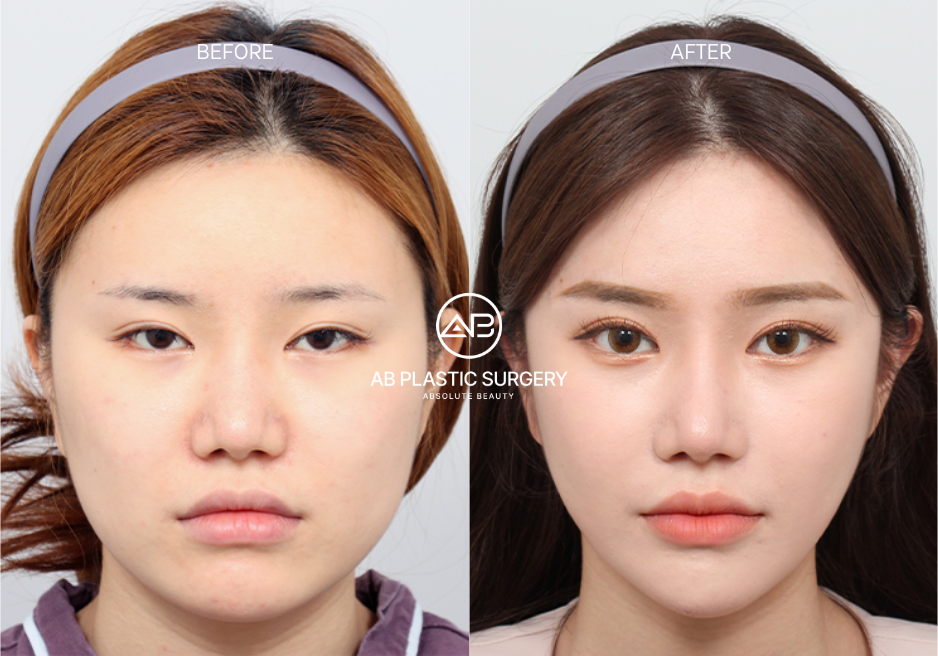
 Why Choose AB Plastic Surgery Korea for Uneven Eyes?
Why Choose AB Plastic Surgery Korea for Uneven Eyes?
Specialized Expertise in Eye Surgery
AB Plastic Surgery Korea focuses extensively on eye procedures, with surgeons who have developed refined techniques specifically for Asian eye anatomy. This specialization means:
-
Deep understanding of the unique challenges in correcting eye asymmetry
-
Experience with thousands of cases involving various types of eye asymmetry and uneven eyes
-
Ability to predict and achieve precise, symmetrical outcomes for uneven eyes patients
Advanced Safety Systems
Your safety is paramount. AB has established comprehensive safety management systems:
-
Real-time monitoring: Anesthesiology specialist monitors patients during surgery
-
Central monitoring system: Double and triple checks throughout the procedure
-
Full-time anesthesiologist: Manages the entire surgical process from pre- to post-operative care
-
In-hospital examination system: Comprehensive pre-operative examination ensures safe surgery for uneven eyes correction
Natural, Translucent Results
AB's philosophy emphasizes creating results that look naturally beautiful, not artificially altered. The semi-fancy translucent adhesion approach ensures:
-
No visible scarring even when eyes are closed after uneven eyes correction
-
Natural crease lines that complement your unique features
-
Long-lasting results without concerns about loosening or revision
-
Minimal swelling and bruising for faster recovery
Customized Treatment Plans
Every face is unique, and so is every case of eye asymmetry. AB's approach includes:
-
Thorough examination of your eye structure, muscles, and tissue condition
-
Precise measurements to quantify asymmetry and determine the extent of uneven eyes
-
Customized surgical plans tailored to your specific anatomy
-
Discussion of your aesthetic goals and realistic expectations for uneven eyes correction
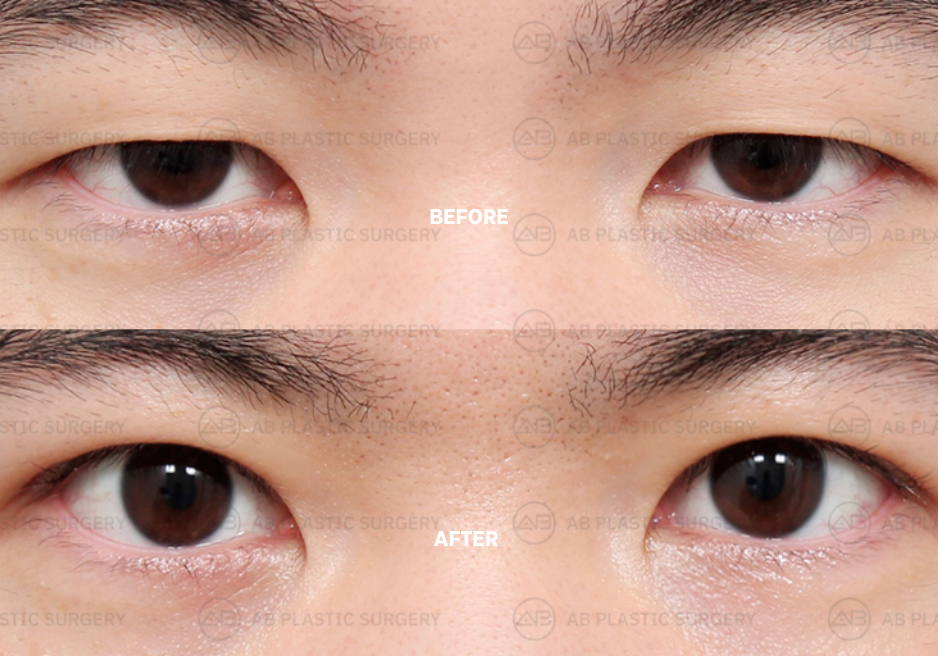
 When Should You Consider Treatment?
When Should You Consider Treatment?
Not all eye asymmetry requires treatment. Consider consultation if:
-
The asymmetry bothers you and affects your confidence
-
You notice the difference is becoming more pronounced over time
-
Vision is being obstructed (particularly with ptosis)
-
You've tried makeup techniques and they don't achieve the look you want
-
The asymmetry developed suddenly (which may indicate an underlying medical issue requiring evaluation)
If you're experiencing any of these signs with your uneven eyes, a consultation can help determine the best treatment approach.
 Taking the Next Step: Online Consultation
Taking the Next Step: Online Consultation
Understanding the cause of your uneven eyes is essential for choosing the right correction method. What works beautifully for uneven double eyelid creases won't address ptosis, and vice versa. Getting a proper evaluation of your uneven eyes is the first step toward correction.
What to expect from an online consultation with AB Plastic Surgery Korea
-
Submit photos: Send clear photos of your eyes from multiple angles
-
Expert evaluation: AB's experienced surgeons will evaluate your specific anatomy and asymmetry causes
-
Personalized recommendations: Receive detailed information about which procedures would work best for your unique situation
-
Treatment planning: Discuss procedure details, recovery timelines, and expected outcomes for your uneven eyes
-
No obligation: Get expert advice without any commitment to proceed
Advantages of online consultation at AB
-
Get expert Korean surgeon evaluation from anywhere in the world
-
No travel required for initial assessment of your uneven eyes
-
Receive personalized treatment recommendations for uneven eyes correction
-
Ask questions and understand your options before making decisions
-
Plan your medical tourism journey with confidence
Understanding Your Journey
Correcting uneven eyes is more than a cosmetic procedure—it's about achieving facial harmony that reflects how you feel inside. Whether your asymmetry is mild or pronounced, caused by genetics or aging, AB Plastic Surgery Korea offers solutions backed by expertise, advanced techniques, and a commitment to natural-looking results.
Remember: Your eyes are one of your most distinctive features. The goal isn't to achieve perfect symmetry—which can actually look unnatural—but rather to create harmonious balance that enhances your natural beauty and boosts your confidence.
With AB's semi-fancy natural translucent adhesion approach, combined with specialized correction techniques for ptosis, epicanthal folds, and outer corner asymmetry, you can achieve the balanced, confident appearance you desire with minimal scarring and natural results.
Ready to explore your options? Book your online consultation today to discover how AB Plastic Surgery Korea's specialized eye surgery techniques can address your specific concerns and help you achieve the symmetrical, naturally beautiful eyes you've been dreaming of. Don't let uneven eyes hold you back from feeling confident—take the first step today.
Medical review note: This article provides general information about uneven eyes and treatment options available at AB Plastic Surgery Korea. Individual results vary, and a personalized consultation is necessary to determine the most appropriate treatment for your specific condition.
